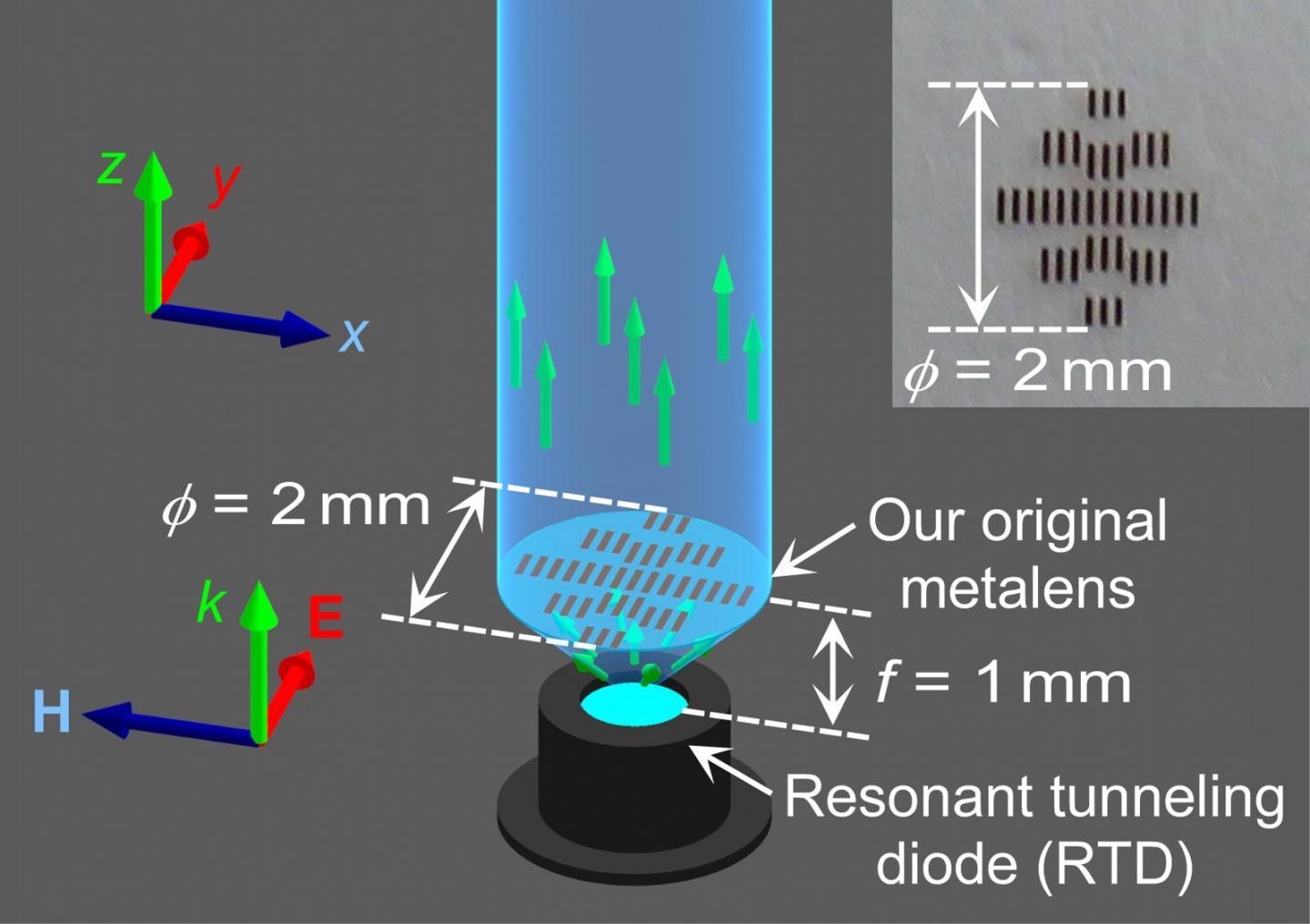Although smartphone screens are now larger, ironically, every other component is engineered to be thinner, flatter and smaller than ever before.
 Ultra-short collimating metalens with a distance of only one millimeter. Image Credit: Takehito Suzuki/Tokyo University of Agriculture and Technology.
Ultra-short collimating metalens with a distance of only one millimeter. Image Credit: Takehito Suzuki/Tokyo University of Agriculture and Technology.
The development of down-sized, two-dimensional metalenses needs a change from shapely, bulky lenses to the creation of miniaturized, two-dimensional metalenses. They may appear better, but do they perform better?
Yes, claims a group of Japanese researchers, in view of a solution published in Applied Physics Express, a journal of the Japan Society of Applied Physics.
Earlier, the researchers developed a low reflection metasurface, which is an ultra-thin interface that can regulate electromagnetic waves, with the goal of controlling terahertz waves. These waves overlap millimeter and infrared waves and, while capable of transmitting a large quantity of data, are easily attenuated in the environment.
The method may not be suited to long-range wireless communications, but it could improve short-range data exchanges, such as household internet rates, according to research author Takehito Suzuki of Tokyo University of Agriculture and Technology’s Institute of Engineering.
Suzuki claims that the researchers have taken a step toward such breakthroughs by employing their metasurface to create the world’s “top” ultra-short metalens, which collimates to align an optical system at a distance of only 1 mm. At the far field, where signal strength normally weakens, the metalens can increase transmitted power by three times.
Terahertz flat optics based on our originally developed low-reflection metasurface with a high-refractive index can offer attractive two-dimensional optical components for the manipulation of terahertz waves.
Takehito Suzuki, Study Author and Associate Professor, Institute of Engineering, Tokyo University of Agriculture and Technology
The question was whether the collimating lens, which uses the metasurface to convert roughly spherical terahertz waves into aligned terahertz waves, could be mounted close to the electronics (called a resonant tunneling diode) that transmits terahertz waves at the right frequency and in the right direction.
According to Suzuki, the minimum distance between the diode and the metalens is a vital component in current and future electrical devices.
We resolved this problem. We integrated a fabricated collimating metalens made with our original metasurface with a resonant tunneling diode at a distance of one millimeter.
Takehito Suzuki, Study Author and Associate Professor, Institute of Engineering, Tokyo University of Agriculture and Technology
The collimating metalens combined with the resonant tunneling diode increases the directivity to three times that of a single resonant tunneling diode, according to measurements.
The researchers set their device to a frequency of 0.3 terahertz, which is higher than that of 5G wireless communications. According to Suzuki, manipulating higher-frequency electromagnetic waves enables the upload and download of massive amounts of data in 6G wireless communications.
The 0.3 terahertz band is a promising candidate for 6G offering advanced cyber-physical systems. And our presented collimating metalens can be simply integrated with various terahertz continuous-wave sources to accelerate the growth of emerging terahertz industry such as 6G wireless communications.
Takehito Suzuki, Study Author and Associate Professor, Institute of Engineering, Tokyo University of Agriculture and Technology
Journal Reference:
Endo, K., et al. (2021) Resonant tunneling diode integrated with metalens for high-directivity terahertz waves. Applied Physics Express. doi.org/10.35848/1882-0786/ac0678.